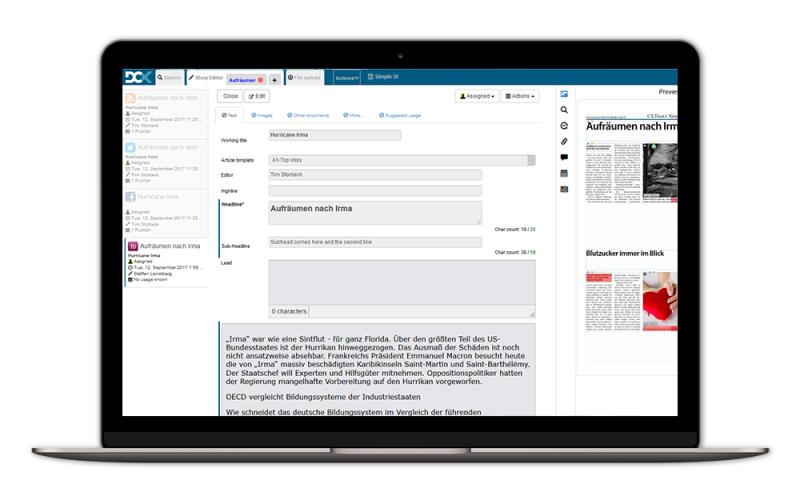Choosing an editorial system requires a lot of thought and depends on many factors. We tell you what to look for when selecting a modern, efficient system.
Plans to purchase a new editorial system require a responsible, well thought-out decision as the new system will shape a company’s editorial workflows and processes for many years to come. That is why it is important that a new system can be enhanced and adjusted to the individual requirements of a media house. A future-oriented editorial system must also be constantly developed further to ensure that you can react flexibly to changing market requirements. A good indicator to measure the liveliness of a system is the number of new customers won over the last few years. New customers always bring new requests and new ideas to the product, which in turn bring the editorial system forward. All existing customers benefit from this progress.
An editorial system does not have to be expensive
Using an editorial system that makes the cooperation between editorial and layout department more efficient can pay off even for small magazine publishers or agencies with just a few employees. If you spend a lot of time sending draft layouts back and forth, organizing release processes or correction procedures for texts, you should definitely be thinking about getting an editorial system. Systems that can be scaled flexibly and are thus available at a moderate price for small businesses with lower requirements are of particular interest here. In addition to the price, having to employ specialists to introduce the system is the biggest cost factor of such a project. The time it typically takes to introduce the system plays a decisive role. An editorial system needs to be implemented fast, whilst it should require little training for editors and other employees to save time- and cost-intensive trainings.
Our recommendation: Content-X
We normally implement the Content-X editorial system, which we developed together with Digital Collections, in less than six months. During this time, we make all the necessary configurations and integrations into existing third party systems together with our customers. The system’s open interfaces ensure that you can connect Content-X to industry standard programs such as InDesign, WordPress or Drupal without much hassle. While the configuration of Content-X is flexible, it also helps editorial departments to make their day-to-day work much more efficient: To use Content-X, an editor merely needs a current browser, a login and an internet connection. This makes the system perfectly suited for the easy integration of freelance editors and writers.
Editors can quickly enter texts in Content-X in a media-neutral format, with images and video assets also being saved centrally. Content-X is based on the popular and powerful Digital Asset Management DC-X. Complicated and confusing folder structures and storage locations become a thing of the past. The system is highly efficient in its research and editorial processes thanks to the central storage of all assets. the sophisticated indexing and an intelligent search function that is based on semantic analyses. Managing content becomes a piece of cake.
Content-X is extremely flexible when playing out content as all of its assets are entered and saved in a strictly media-neutral way. News desks are able to supply both the traditional print channel as well as a website or a Facebook page with content. The system has no limits when it comes to integrating digital channels.
Say yes to InDesign and no to high software license costs
The Content-X editorial system uses the industry’s leading layout tool, InDesign, thus offering the best tool for creativity and quality. At the same time, it helps to save unnecessary software license costs. As the majority of editors works in DC-X, only a few workstations actually require InDesign. In addition to this, the latest version of Content-X offers the option to produce standard pages based on templates. The entire workflow from creating the pages to filling the article templates with content and creating the print PDF can be done without InDesign. This makes editorial workflows even more efficient and layout staff can focus on their core competencies, namely the creative design of elaborate cover stories and features. This allows you to give your readers a publication of even higher quality.
In 2018, Egmont Publishing in Norway and the Verlag Nürnberger Presse were amongst those putting their trust in Content-X.





